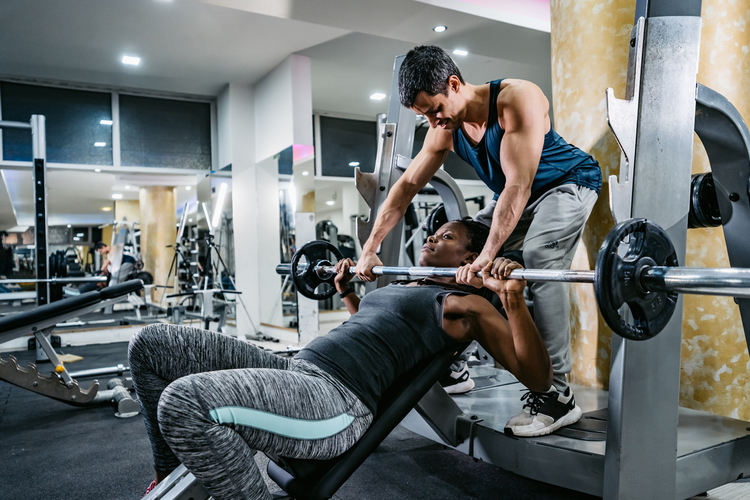Feel the Rep – Modify Movements to Maximize Gains
EDITORS NOTE: Kurt Weber is a Strength Coach at Cal Fullerton and private trainer, certified by NSCA-CSCS and USAW. You can find him at weberstrength.com and twitter.com/weberstrength.
If you have been training for a while, you’ve probably heard the term “muscle memory.” Muscle memory is the body’s ability to perform a given movement correctly, efficiently and repetitively without deviation or error. It can be both your best friend or your biggest enemy for producing muscle/strength gains. You need muscle memory to get the most out of every rep, but too much muscle memory can lead to staleness or a “plateau.” Your muscles learn and adapt just as your mind does.
Let’s say I ask you what’s 9 x 7. Hopefully after a second or two you will answer 63. Then I ask you again what 9 x 7 is…. You immediately say 63. And again and again until you obviously aren’t even thinking about the math anymore, you just know. Your muscles learn the same way. You introduce a particular stimulus (a weight, an exercise, and a rest interval) in order to create an overload, which the body must adapt to, which produces gains. If there is no overload to a muscle, the body has no reason to adapt or grow. When the overload stops, the adaptations stop as well. The body is very efficient, and it will adapt to whatever stimulus is placed on it, whether that is lying on the couch all day, lifting 500lbs, or running a 6 minute mile.
Much of the information out there only outlines the big picture, such as exercises, reps and sets, but many fail to explain the most important part – The actual rep itself! How should it feel? How hard should it be? How fast/slow should each movement be? Too many people get caught up in counting reps and sets, rather than FEELING the rep and set. Do you think your muscles are counting the reps as you do a set? Of course not. Muscles can’t count! They are merely responding to the stimulus placed on them.
People often ask to see my program, but are shocked to hear that I never write it down BEFORE I train. My workouts are never exactly the same. I auto-regulate every workout, which means modifying it in relation to how I am performing that day. I have a movement or muscle group that I emphasize each day, but I am not confined to a particular rep and set number. I feel it, and I know when I’m done, rather than having a piece of paper tell me when I’m done. It could be 4 sets, it could be 10 sets. In the words of a popular TV personality, just “DO WORK.” If you have this mentality, you will grow.
The reason for this is to create an overload each day without selling myself short, or over-doing it when I’m fatigued. So, how do you manipulate your workout to create constant overload day in and day out WITHOUT just adding more weight? I’m going to outline the various ways to modify a rep in order to keep your workout fresh, and give the muscle something new to think about each day!

1) Speed
Time to take out your physics books! In order to make gains in strength and size the muscle must produce more Force. A popular equation used in the weight training industry is:
Force = Mass * Acceleration
Most people go into the gym with the sole purpose of adding more weight than last time (mass), in order to produce more force. This is true, but that’s not the only piece of the puzzle! You see that other guy there, Acceleration? He’s an important player in the muscle game as well. So, rather than adding more weight than last workout, you can simply move the weight FASTER. In fact, many studies have shown that regardless of the weight, simply the INTENT to move the weight fast is just as effective as the weight itself for stimulating more muscle growth. It should be noted that I’m referring to the concentric or “squeezing” part of a lift. The eccentric or “stretch” portion should always be performed under control.
2) Tempo
Some strength coaches and bodybuilders thrive on tempo, which means doing each rep with a predetermined time for each portion of the lift (eccentric, pause, concentric, pause), or when written out, looks something like “3-1-0-1” meaning 3 seconds for the eccentric, 1 second pause, explosive concentric, 1 second pause. This method is used to create more Time Under Tension or “TUT”. It is believed that a greater TUT will stimulate more muscle fibers, resulting in greater strength or size. I tend to use tempo more for back or pulling exercises, as those muscles are used for grabbing, pulling, and holding. If you are used to doing every exercise with the same tempo, try an alternate tempo to switch it up!
httpv://www.youtube.com/watch?v=6k–yCS_2bg
3) Chains & bands
Every exercise has a biomechanically weak point, or “sticking point.” This point is typically a 2-3 inch range of motion within the rep. So, the weight that you choose for a particular exercise is basically just heavy enough that you can still move the weight through the sticking point. But what about the rest of the rep? If you just chose a weight for the 2-3 inches of sticking point, are you overloading the rest of the rep? NO! Only the 2-3 inches is difficult, and the rest is too easy. Adding bands or chains to a weight is called accommodating resistance. At the bottom of a lift, or sticking point, the weight is lighter, because the chains are on the ground or the bands are looser. As the rep gets easier past the sticking point, weight is constantly added, which overloads the ENTIRE rep! Now this method doesn’t work for every exercise, but is popular with core lifts such as bench, squat, dips, and deadlifts.
httpv://www.youtube.com/watch?v=dcArvY3GdB0
4) Unilateral
Many exercises in the gym are performed bilaterally or 2 limbs at the same time. But we live in a unilateral world. Rarely are we ever moving 2 limbs at the same time in the same direction, both in real life and sports. Another method to switch it up is to perform the same exercise using one leg or arm at a time. Usually it’s necessary to switch to dumbbells for this, but some can still be done with a barbell. This method is also great if you have an injury. Studies show that continuing to perform resistance training on the un-injured limb will enhance recovery of the injured limb!
httpv://www.youtube.com/watch?v=DcgKBBKKC18
5) Rest-less
Simple concept. If you’re used to resting 2 minutes between sets, rest 1:30. This simple change can greatly enhance the intensity of your workout, making it more difficult, and gives the body another variable to adapt to.
So, if you’re bored with your current workout, stuck in a rut, or just need a change, try these methods. They are ALL effective, and are all great ways to keep the body in a constant state of growth!


